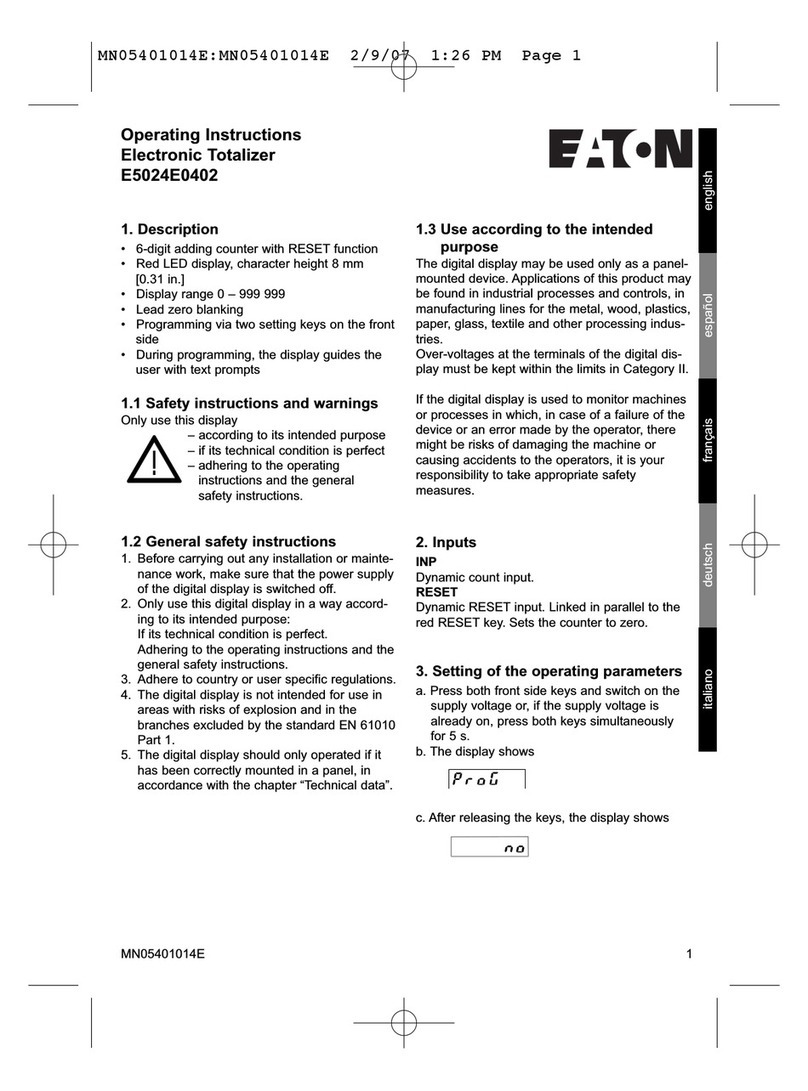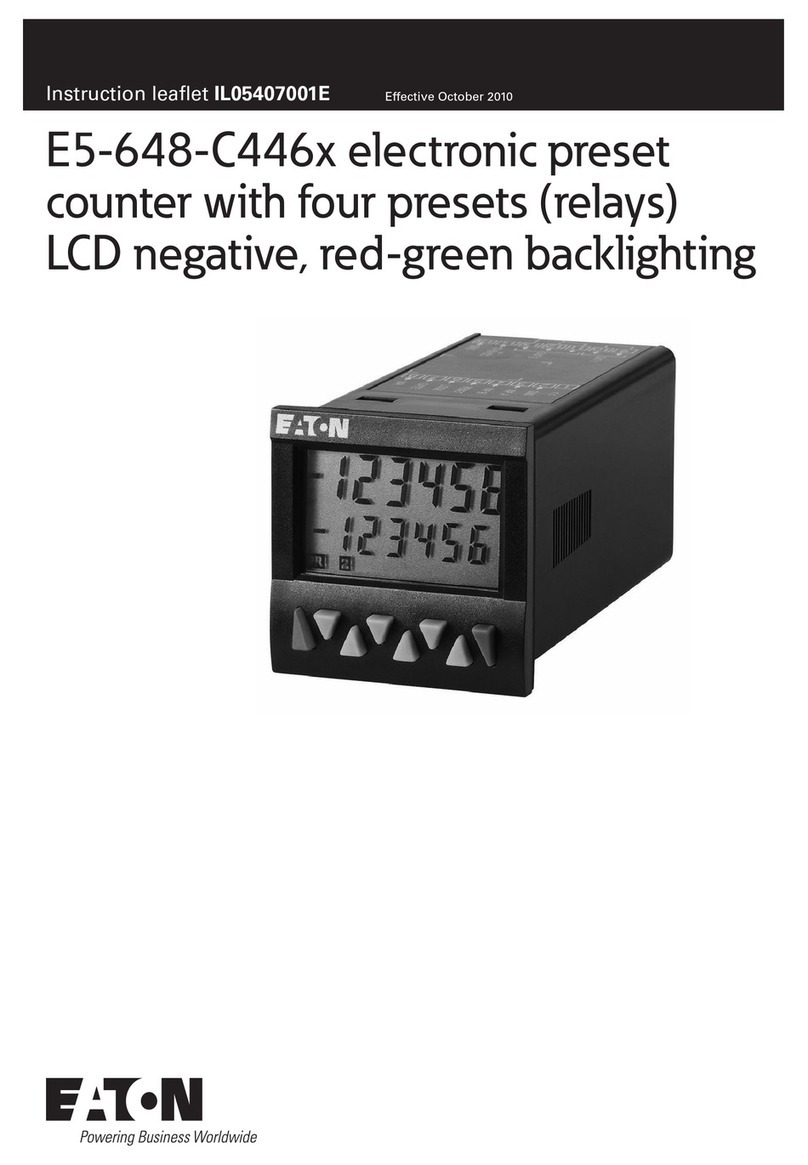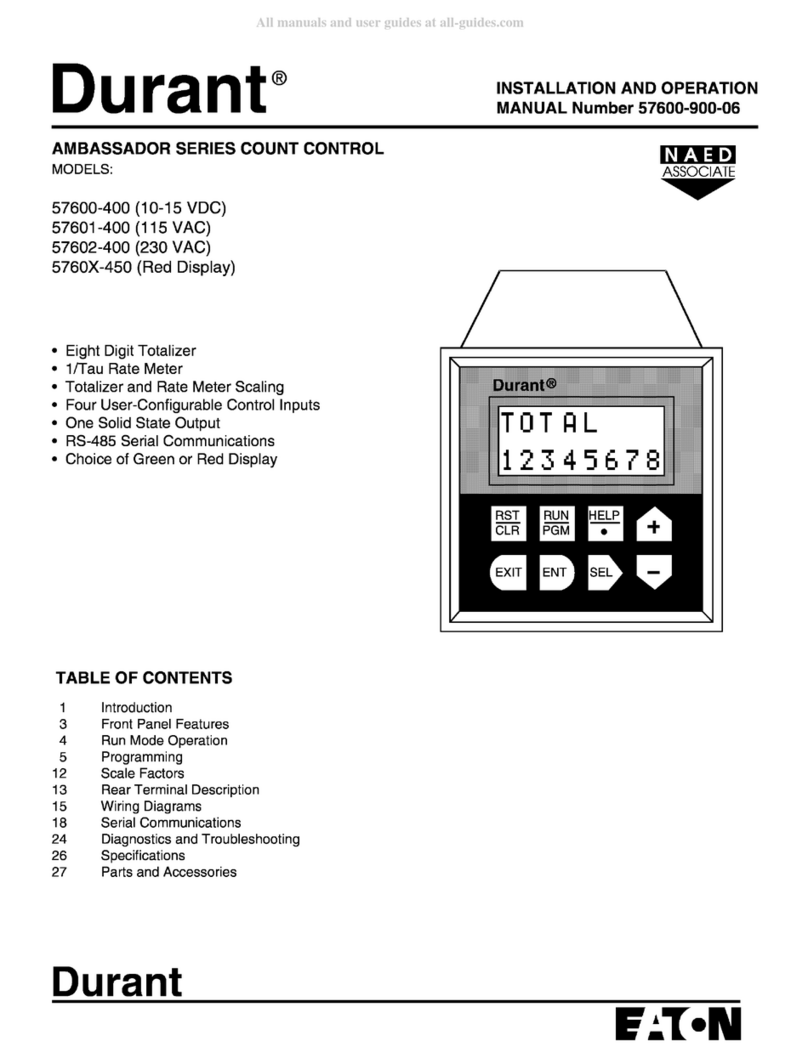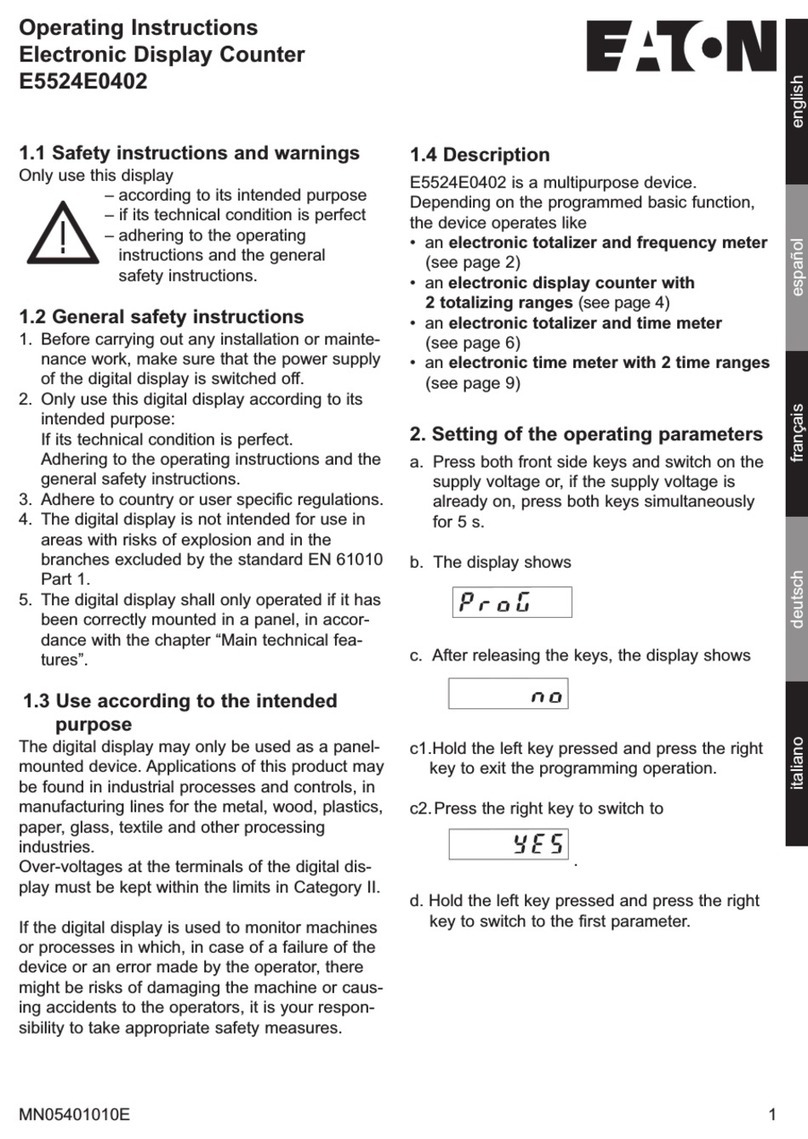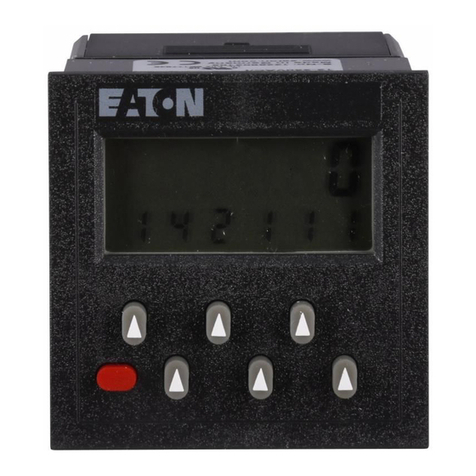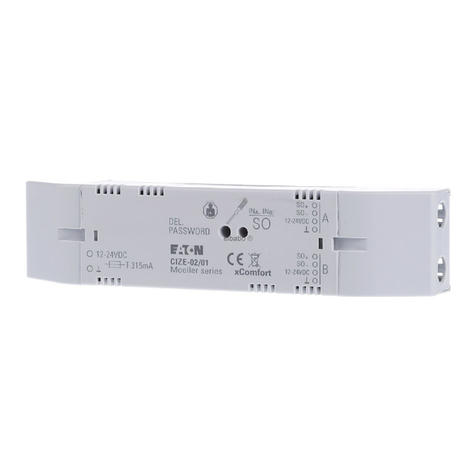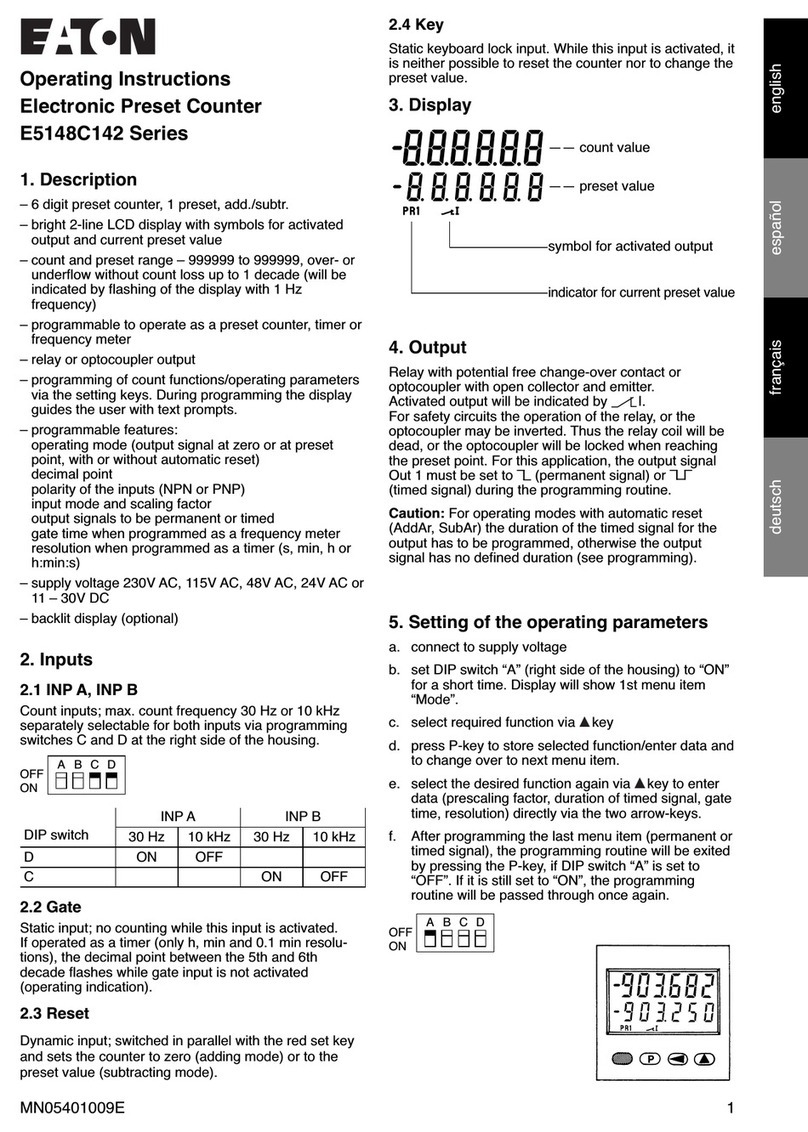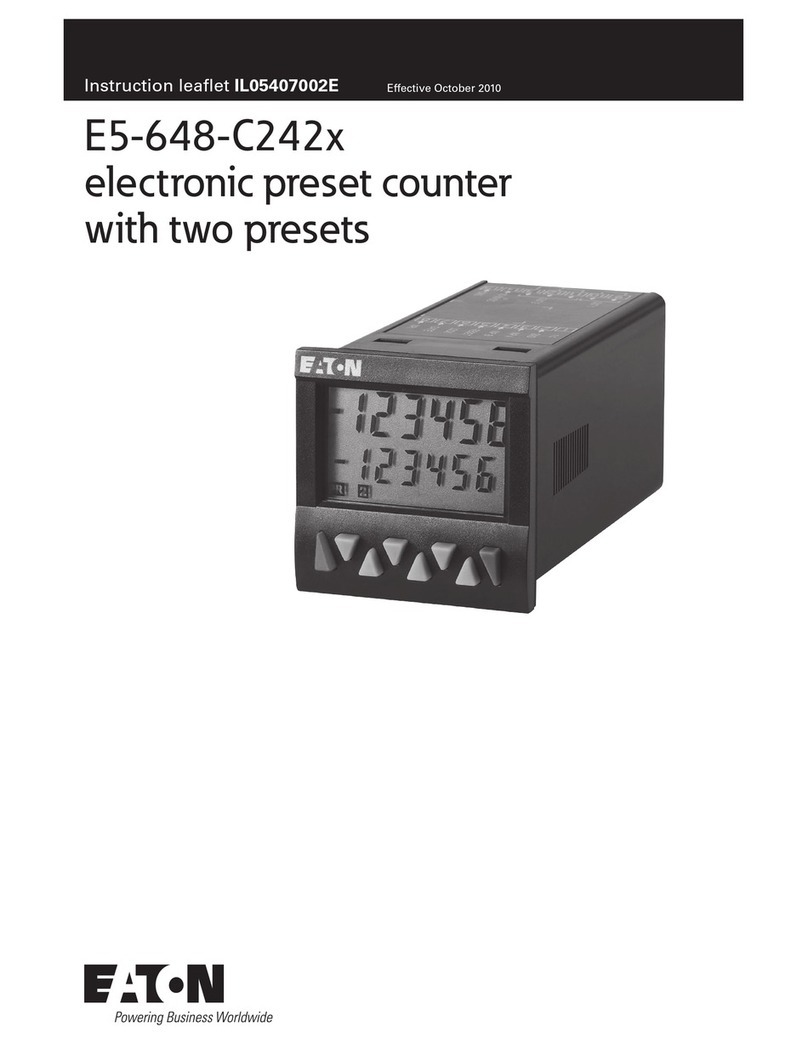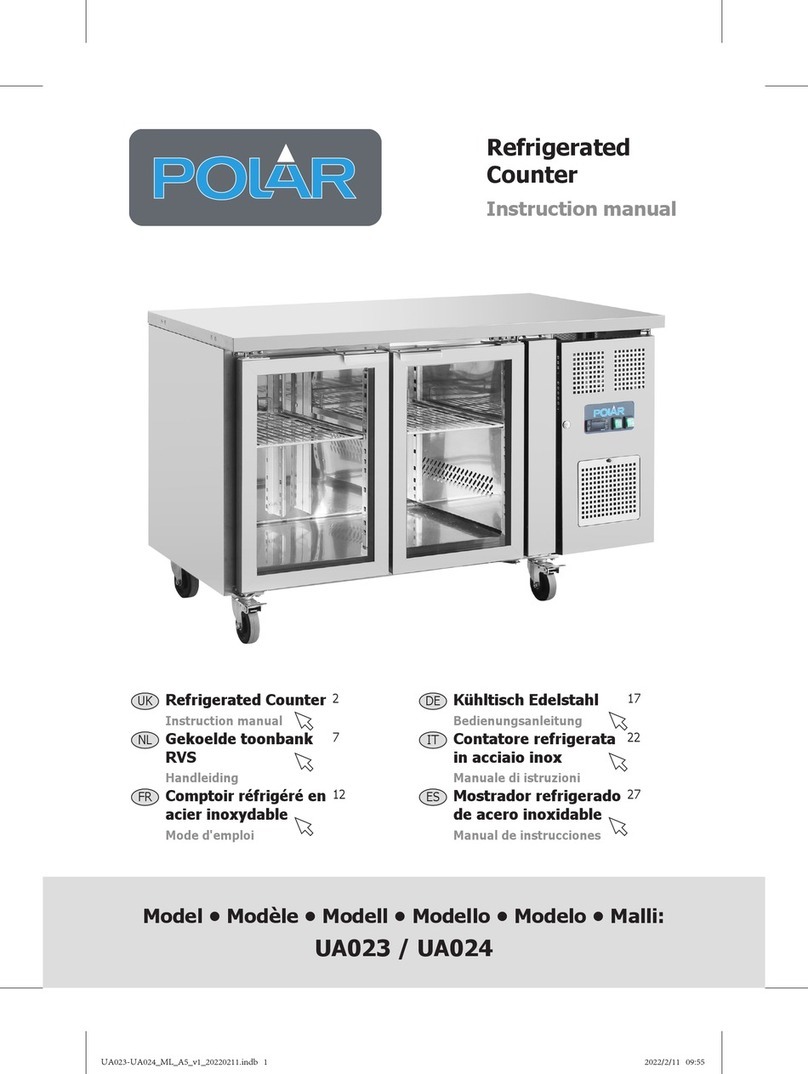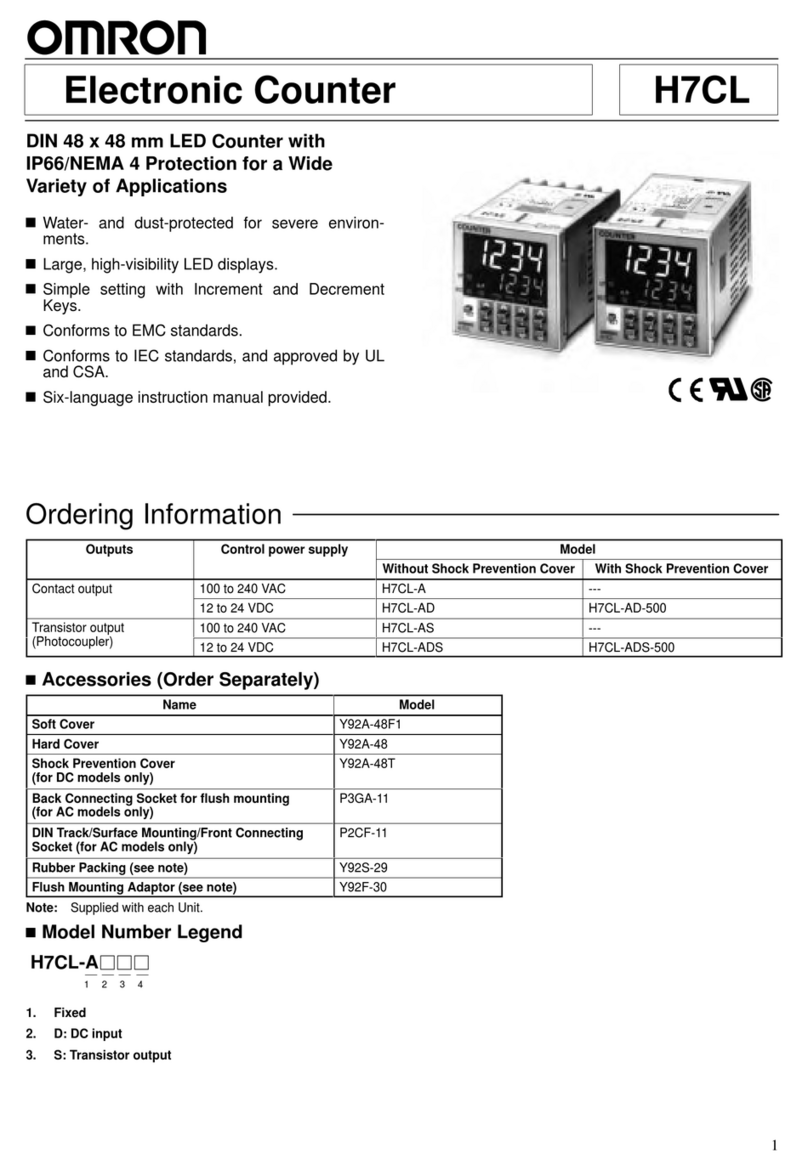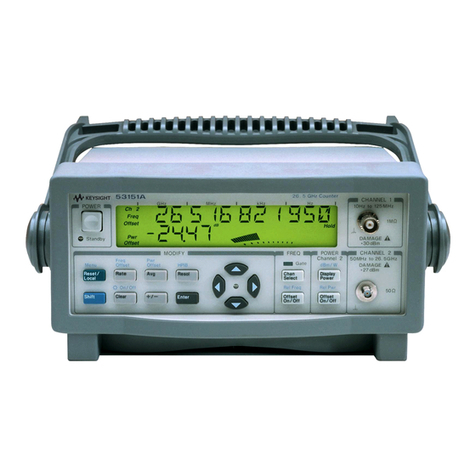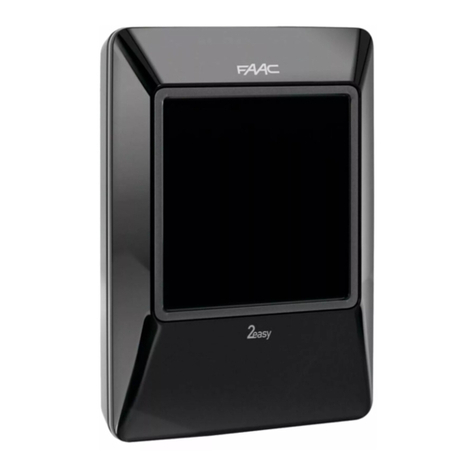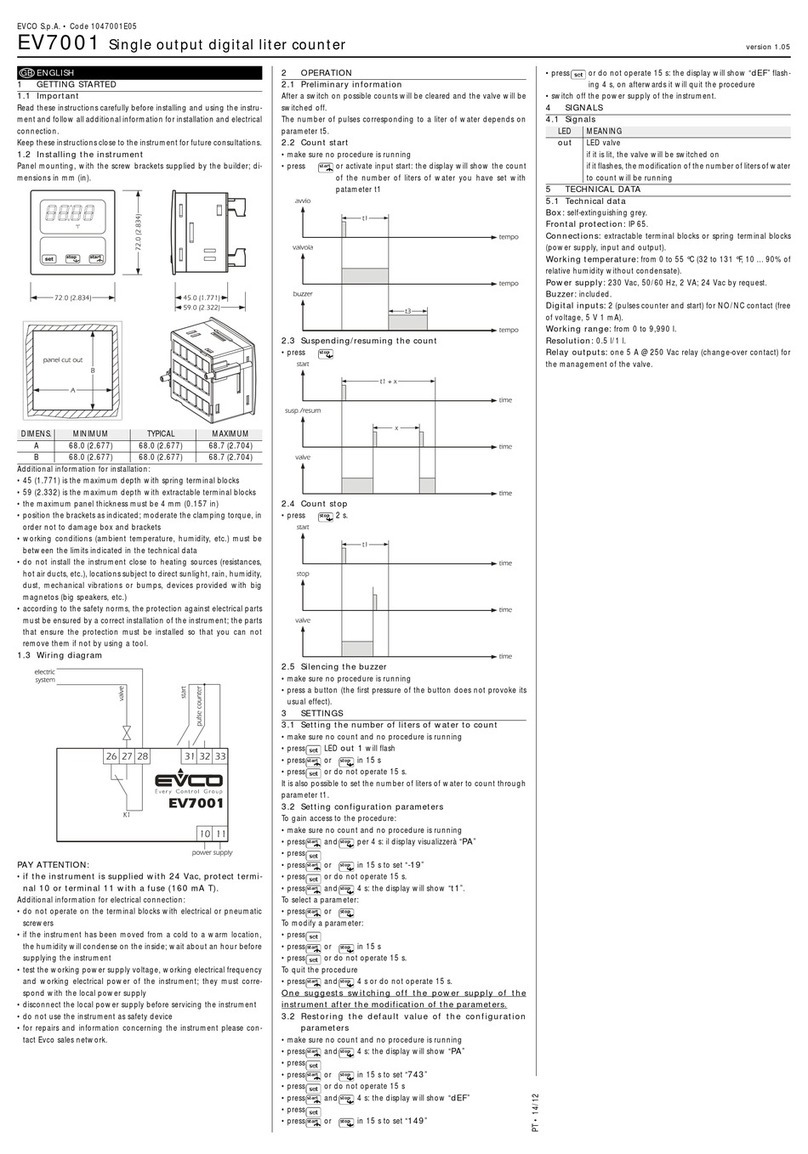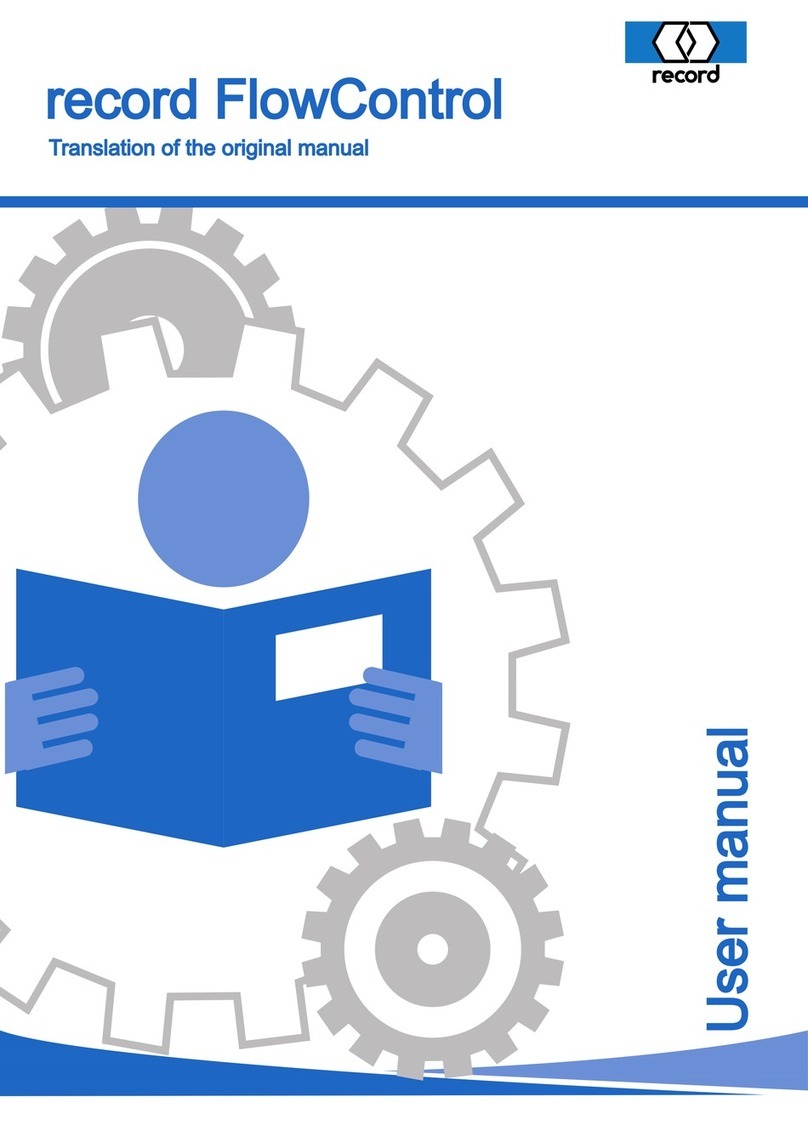
1
INTRODUCTION
MENU PROGRAMMING
AnotheruniquefeatureoftheAmbassadorfamilyofcounters
isthemenudrivenprogramming.Thetwolinealpha-numeric
display prompts programming choices, thus eliminating the
need to remember or look up programming codes. A non-
volatile memory retains programming choices, presets, and
count values while power is removed.
APPLICATION
To better understand the features and capabilities of the
Ambassador, review the simplified block diagram at the top
of the next page and the programming diagrams on pages 6
through 9. Because of the Ambassadors’s versatility, both
programmingandwiringdecisionsmustbemadebeforethe
counter can be operated. The following sequence of activi-
ties is recommended:
1. Answer the following questions:
What should the count register represent?
What should each output control or do?
What effect should the preset have on the outputs?
What should cause the count register to reset?
Which control signals should affect outputs (resets,
programmable inputs, output timers, etc.)?
What engineering units should the rate represent?
2. Gothroughtheprogrammingsectionandmarkthechoices
required for the application.
3. Go through the wiring section and lay out the wiring
required. Remember that wiring is affected by program-
ming.
4. Wire and program the counter as determined in steps 2
and 3 above.
GENERAL DESCRIPTION
The Durant Ambassador 5760X-401 is a six digit single
preset count control device with four programmable inputs,
threeoutputs,andabuilt in rate meter.Thecounterhasnine
countinputmodes, and maybeusedto controlcutlength,fill
quantity, or number of pieces/container. Each of the inputs
may be programmed for one of six functions. Each of the
outputs are independent and have separate pick-up, drop-
out, time, latch, and reverse functions.
RATE METER
In addition to count/control capabilities, a rate meter is
provided to monitor the speed of the incoming count signal.
Thisratefeatureusesthe1/taumethod(eventtimemeasure-
ment)andcancalculateandscaletheratesothatevenalow
count speed (.1 Hz) can yield accurate rates in engineering
units (ft./sec., gal/min., etc.). The rate feature operates
simultaneously with the count/control functions.
PROGRAMMABLE I/O
One of the unique features of the Ambassador family of
counters is the programmability of the inputs and outputs.
Eachofthefourinputscanbeindependentlyprogrammedto
perform one of six functions. The user can also select which
events (counter preset outputs, counter reset inputs, serial
commands, output timers, and output control inputs) will
cause each of the three outputs (1 relay and 2 transistor) to
pick-up and drop-out. Any input(s) may be programmed for
output control, however, multiple output control inputs are
paralleled into a single output control channel in the unit.
DISPLAY
AllAmbassadorCount/Controlsareavailableingreenbacklit
LCD display and reverse image red LCD display versions.

